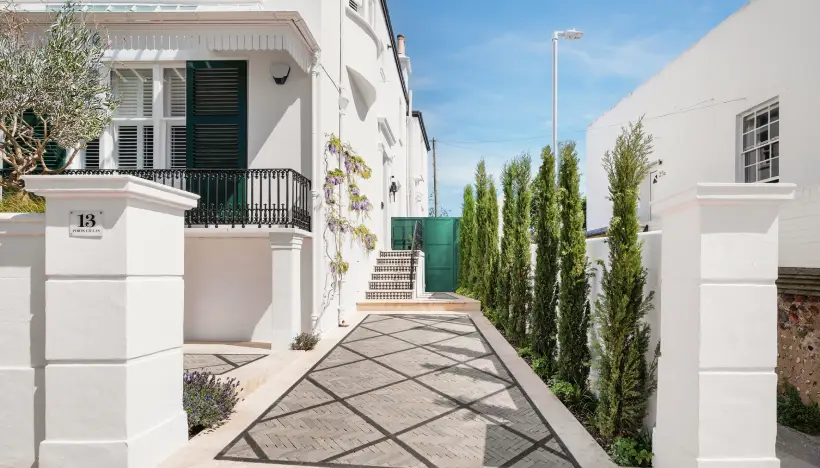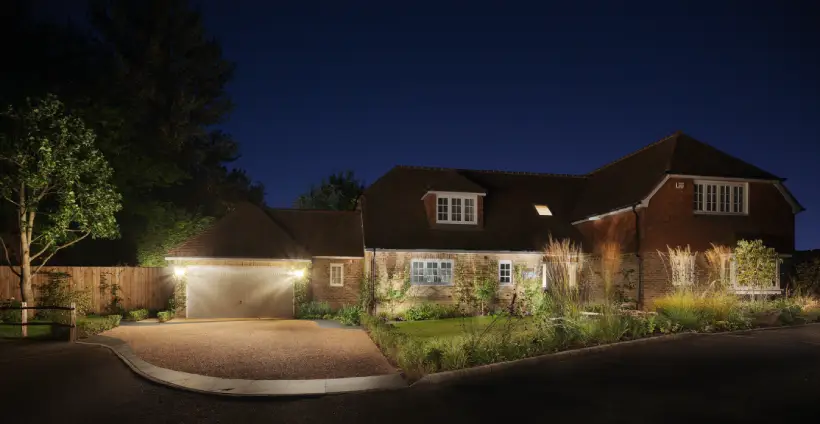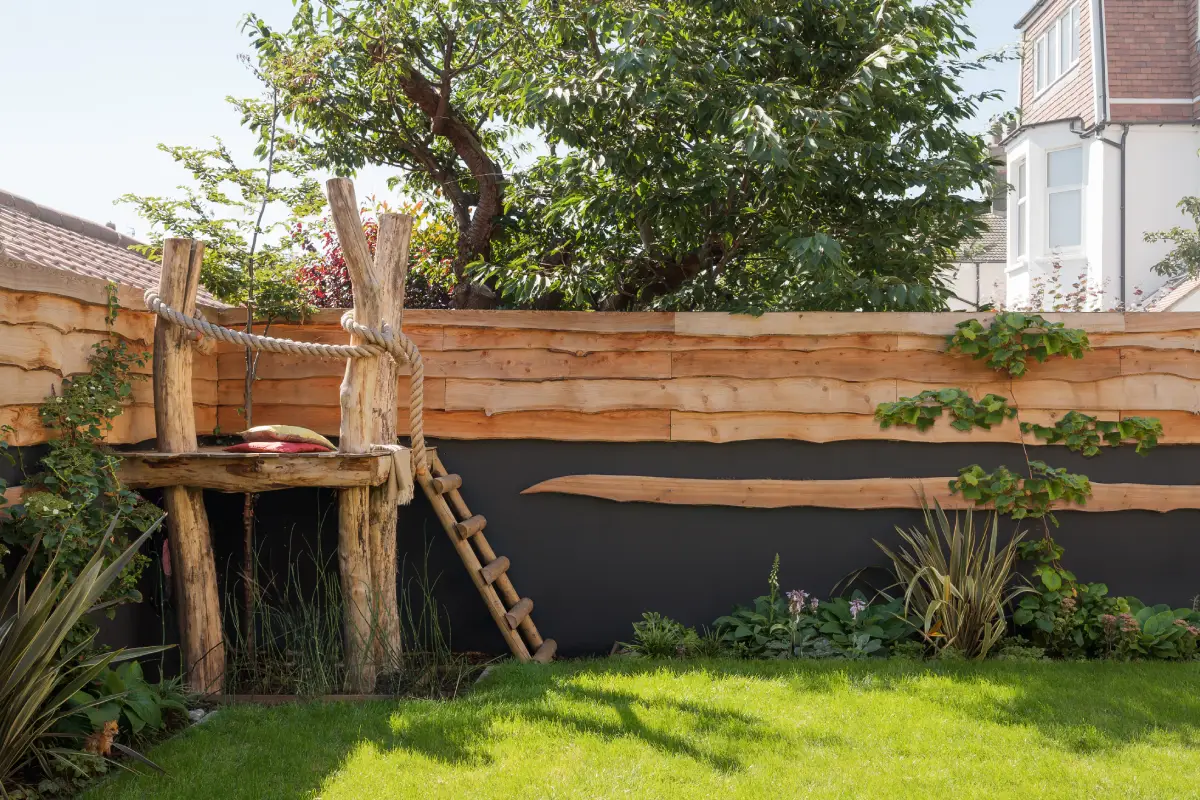Your front garden or “front of house” space is more than just a functional area. It’s the first impression your home makes, setting the tone for its style and character. A well-designed front space can balance practical needs like parking and pathways with aesthetic considerations that enhance your home’s kerb appeal. Here, we explore how to create a front-of-house design that harmonises with your architecture while meeting the requirements of modern life.
1. Reflecting the Architecture of Your Home

The design of your front garden should complement the architectural style of your house. For traditional homes, classic planting schemes and natural materials like natural stone can create a timeless look. In contrast, modern properties may benefit from sleek, minimalist lines and a focus on clean hardscaping with low-maintenance plants. Consider your home’s character as the foundation of your design choices, ensuring a seamless visual connection between the house and its surroundings.
2. Breaking Up Hard Landscaping with Planting

Today’s front gardens often need to accommodate multiple cars, but excessive hardscaping can feel stark and uninviting. Introducing planting beds or green borders can soften the impact of driveways and hard surfaces. After all, the front of your home is supposed to be striking yet inviting so getting that balance just right provides an optimal look for your property. Hardy shrubs, ground cover, hedges, and climbing plants over walls add texture and interest.
3. Creating a Welcoming Entrance

Your front door should be a focal point. Pathways should guide visitors naturally to the entrance, perhaps even with lighting to ensure safety and highlight key features. Adding planters or framing the doorway with symmetrical planting can define the entrance beautifully. You’ll also want a material for your pathways that is going to be durable and easily maintained as this is an area of your property that you will want to look pristine for years to come.
4. Managing Traffic: Pedestrians vs. Cars

Designing clear, separate zones for pedestrians and vehicles gives a personal touch whilst maintaining order and safety. It also allows you to again create that focal point of the home at your entrance. You’ll want to provide guests with parking spaces that blend into your design without being too far away from your home or distracting from the overall design. Wide pathways provide a comfortable approach to the house, while designated parking spaces can blend into the design with features like contrasting paving patterns or integrated planting strips.
5. Benefitting Your Kerb Appeal

Your home’s “kerb appeal” is its visual allure from the street. Even small changes, like adding decorative railings, updating your front door, or introducing vibrant seasonal planting can make a big difference. Consider features like statement pots, climbing plants, or lighting to draw attention to key areas.
6. Maximising Your Property’s Potential

Thoughtful front garden design can increase the perceived size and value of your property. Clever use of layering, such as low planting in the foreground with taller shrubs or trees near the house creates depth. Incorporating a mix of textures, colours, and heights can make even a modest space feel dynamic and full of character.
7. Defining Boundaries and Privacy

Front garden boundaries play a key role in creating privacy while maintaining a welcoming feel. Options like hedges, trees, walls, railings or elegant screening can provide separation without feeling too closed off.
8. Gates and Railings: Blending Security and Style

Driveway gates and pedestrian gates are practical and aesthetic elements. Whether you opt for a more traditional or a sleek contemporary style these features should match the overall style of your home. Automated gates add convenience, while pedestrian gates offer charm and a sense of welcome.
9. Embracing Planting for Year-Round Appeal

A carefully curated planting scheme can make your front garden attractive throughout the year. Evergreens provide structure, while flowering plants like lavender or hydrangeas offer seasonal colour. Grasses and perennials add movement and texture, ensuring that your garden evolves with the seasons.
10. Street Definition and the Bigger Picture

Consider how your property fits within the wider streetscape. Aligning the design with neighbouring properties can create a sense of unity, while unique features can help your home stand out. Elements like uniform hedges or coordinated gate designs can compliment the overall appearance of your street while still expressing your personal style.
Designing a front-of-house space that balances practicality, style, and harmony with your home’s architecture is a rewarding challenge. By combining all of the above, you can create a front garden that serves as both a functional entryway and a stunning visual statement. Whether you’re aiming to boost kerb appeal or maximise your property’s potential, your front garden is a space worth investing in.




